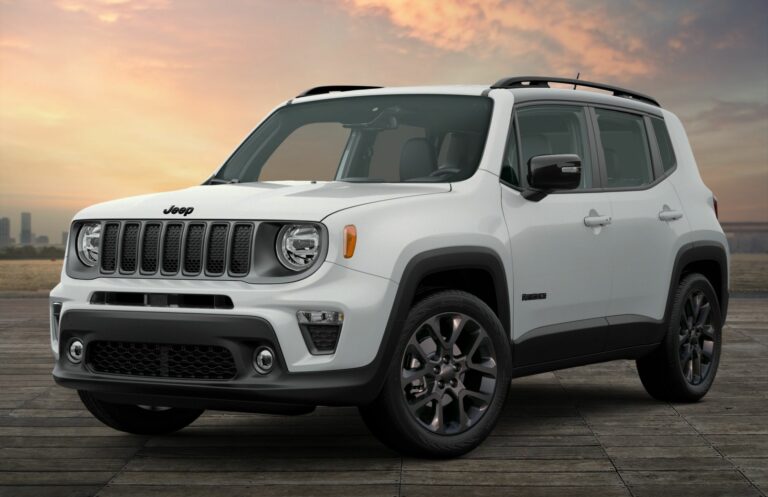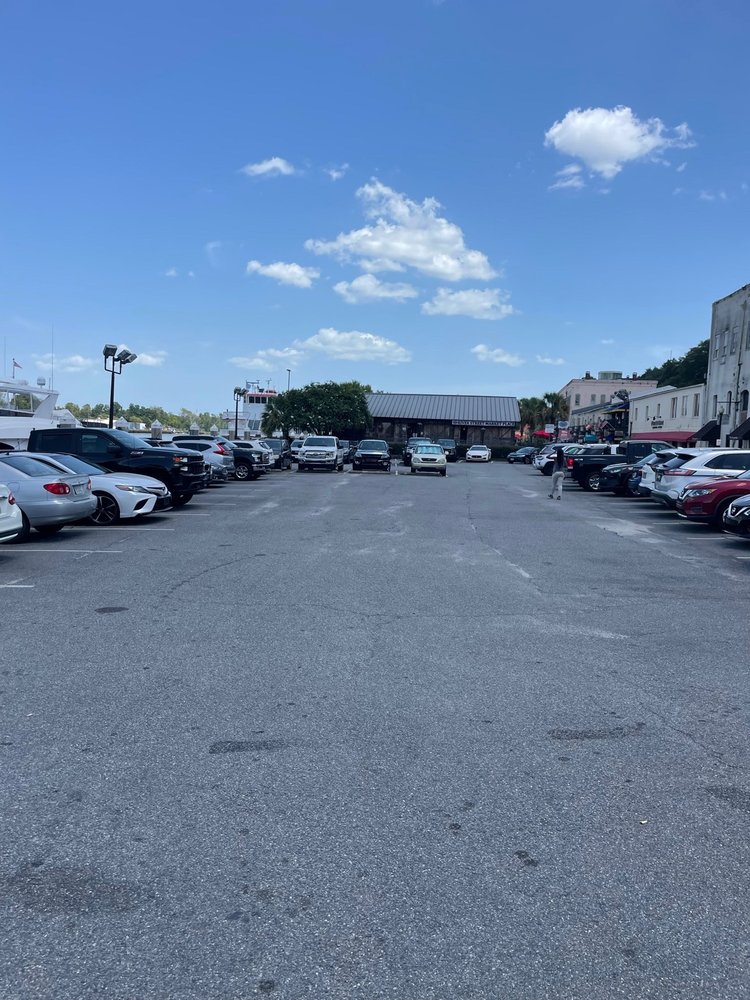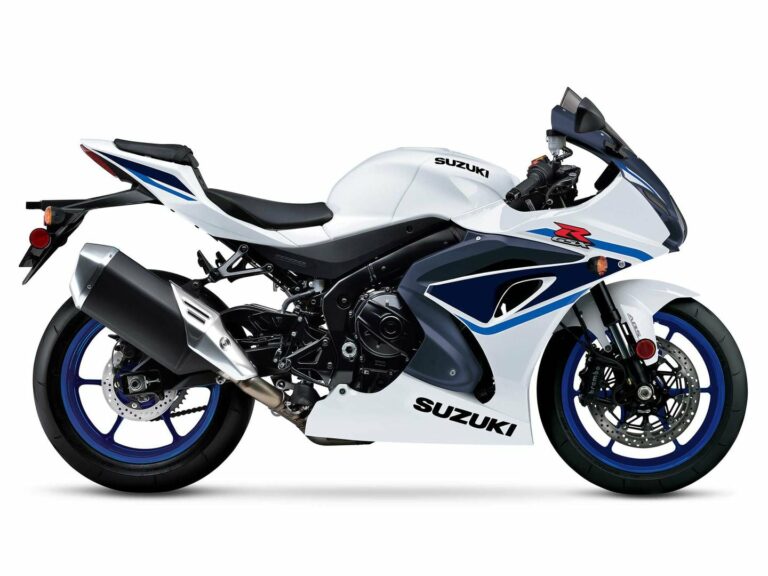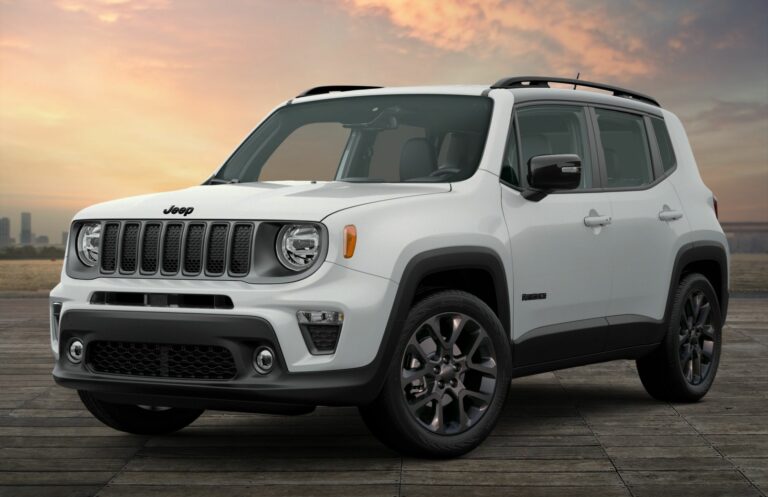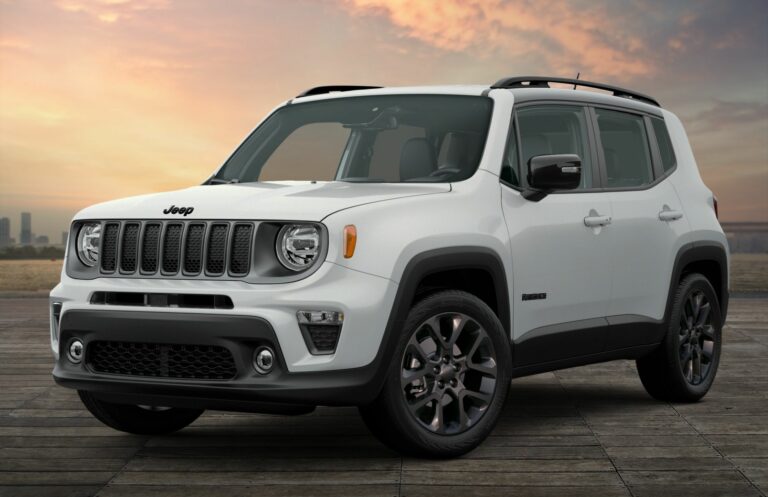Willys Jeep CJ For Sale: Your Ultimate Guide to Owning an Icon
Willys Jeep CJ For Sale: Your Ultimate Guide to Owning an Icon jeeps.truckstrend.com
The rumble of a classic engine, the unmistakable silhouette, and the promise of unparalleled off-road adventure – these are the hallmarks of the Willys Jeep CJ. More than just a vehicle, the Willys CJ is a rolling piece of American history, an enduring symbol of rugged individualism and utilitarian design. For enthusiasts and collectors alike, the phrase "Willys Jeep CJ For Sale" isn’t just a classified ad; it’s an invitation to own a legend. This comprehensive guide will delve into everything you need to know about finding, evaluating, and acquiring your very own Willys CJ, transforming the dream of ownership into a tangible reality.
The Enduring Legacy of the Willys CJ
Willys Jeep CJ For Sale: Your Ultimate Guide to Owning an Icon
To understand the appeal of a Willys CJ, one must first appreciate its origins. Born from the crucible of World War II, the original Willys MB was a simple, robust, and incredibly capable vehicle that played a pivotal role in the Allied victory. After the war, Willys-Overland saw the potential for a civilian version, giving birth to the "Civilian Jeep," or CJ.
Starting with the CJ-2A in 1945, these vehicles brought the military’s rugged utility to farms, ranches, and recreational trails across America. Over the decades, the CJ line evolved through various iterations – CJ-3A, CJ-3B, CJ-5, CJ-6, CJ-7, and the CJ-8 Scrambler – each building upon the foundational principles of simplicity, durability, and off-road prowess. While production of the CJ series ceased in 1986, replaced by the Wrangler (YJ), their legacy continues to thrive. Owners are drawn to their mechanical simplicity, allowing for easy maintenance and modification, and their unmistakable classic aesthetic. Owning a Willys CJ isn’t just about driving; it’s about connecting with a rich heritage and joining a passionate community.
Understanding the Different CJ Models
When you see "Willys Jeep CJ For Sale," it’s crucial to know that not all CJs are created equal. Each model offers a unique blend of history, features, and characteristics that influence its desirability and value.
-
CJ-2A (1945-1949): The "Agri-Jeep"
The first civilian model, easily identifiable by its flat fenders, external fuel filler, and tailgate. Many were sold for agricultural use. Simple, rugged, and a true piece of post-war history.
-
CJ-3A (1949-1953): The Workhorse
An evolution of the 2A, featuring a one-piece windshield that allowed for more interior space and improved visibility. Still very much a utilitarian vehicle. -
CJ-3B (1953-1968): The "High-Hood"
Designed to accommodate the taller "Hurricane" F-head engine, the 3B features a distinctive taller hood and grille. This model had a long production run and is known for its improved power. CJ-5 (1955-1983): The Longest-Lived
Based on the Korean War M38A1 military Jeep, the CJ-5 was produced for nearly 30 years, making it the most common vintage CJ. It offered a slightly longer wheelbase and more comfortable ride than its predecessors. Over its lifespan, it saw various engine options, from the original "Go-Devil" and "Hurricane" to the Dauntless V6 and later AMC inline-six and V8 engines.-
CJ-6 (1955-1975): The Extended Version
Essentially a long-wheelbase version of the CJ-5, offering more cargo space or rear seating. Less common than the CJ-5, making it a rarer find. -
CJ-7 (1976-1986): The Modern Classic
The CJ-7 is arguably the most popular and versatile of the CJ line. It featured a wider frame than the CJ-5, allowing for a more stable ride and accommodating larger transmissions. Its longer wheelbase and improved suspension made it more suitable for daily driving, while retaining all the classic CJ ruggedness for off-road adventures. Many modern modifications are designed with the CJ-7 in mind. -
CJ-8 Scrambler (1981-1986): The Pickup Jeep
A rare and highly sought-after long-wheelbase CJ-7 with a small pickup bed. Combining the utility of a truck with the classic Jeep aesthetic, Scramblers command premium prices.
Where to Find Willys Jeep CJs For Sale
The hunt for a Willys CJ can be an adventure in itself. Here are the most common avenues to explore:
- Online Marketplaces: Websites like Craigslist, Facebook Marketplace, and eBay Motors are excellent starting points. Use specific search terms like "Willys CJ," "Jeep CJ-7," "CJ-5," etc. Be wary of scams and always insist on seeing the vehicle in person.
- Dedicated Forums and Clubs: Online communities such as JeepForum.com, The CJ-2A Page, or local Jeep clubs often have "for sale" sections. These platforms connect you with fellow enthusiasts who are passionate about CJs and can offer valuable insights.
- Specialty Dealerships and Restorers: Classic car dealerships, especially those specializing in 4x4s or vintage vehicles, often have restored or well-maintained CJs. While prices might be higher, you often get a vehicle that has been thoroughly inspected and possibly restored professionally.
- Auctions: Online auction sites like Bring a Trailer and Mecum Auctions frequently feature high-quality, restored, or original CJs. Physical classic car auctions are another option, though they require on-site inspection.
- Word of Mouth and Local Searches: Tell friends, mechanics, and local garage owners that you’re looking. Sometimes the best finds are hidden away in a barn or garage, discovered through local connections. Attending local classic car shows can also yield leads.
What to Look For When Buying a Willys CJ: Key Considerations
Purchasing a vintage vehicle like a Willys CJ requires a keen eye and a thorough inspection. Here’s what to prioritize:
- Rust: The Number One Enemy: CJs are notorious for rust. Inspect the frame rails, body tub (especially the floorboards, firewall, and rear cargo area), fenders, and rocker panels. Minor surface rust is manageable, but extensive frame rot or body perforation can lead to costly repairs or render the vehicle a parts donor.
- Drivetrain Integrity:
- Engine: Check for leaks, strange noises, and excessive smoke. If it’s not the original engine, research the swap. Is it a common and reliable conversion?
- Transmission and Transfer Case: Look for fluid leaks, listen for grinding noises during shifting, and ensure all gears engage smoothly. Test 4WD engagement.
- Axles: Check for leaks at the differential covers and wheel ends. Listen for howling or grinding sounds, which could indicate worn gears or bearings.
- Brakes and Steering: Test the brakes thoroughly. Do they pull to one side? Is the pedal firm? Check for excessive play in the steering wheel, which could indicate worn steering components (tie rods, drag link, steering box).
- Electrical System: Older vehicles often have quirky electrical systems. Check all lights, gauges, wipers, and the horn. Look for frayed wires or amateur wiring jobs.
- Suspension: Inspect leaf springs, shocks, and shackles for damage, rust, or wear. A saggy suspension indicates worn components.
- Modifications: Many CJs have been modified. Evaluate whether the modifications are professionally done and suitable for your intended use. A well-done lift kit or engine swap can add value, but shoddy work can be a nightmare.
- Documentation: A clear title is paramount. Any service records, original owner’s manuals, or build sheets add significant value and provide insight into the vehicle’s history.
- Originality vs. Resto-Mod: Decide if you want a historically accurate, numbers-matching original or a modified "resto-mod" with modern conveniences and power. This will heavily influence your search and budget.
Pricing Your Willys CJ: Factors Affecting Value
The price of a Willys Jeep CJ varies dramatically based on numerous factors. There’s no single "Willys Jeep CJ For Sale" price; rather, it’s a spectrum.
- Condition: This is the primary determinant.
- Project Vehicle: Requires significant work, often not running or needing major repairs. (Lowest price range)
- Driver Quality: Runs and drives, but may have cosmetic flaws, minor mechanical issues, or need updates. (Mid-range)
- Nicely Restored/Original: Excellent cosmetic and mechanical condition, either professionally restored or meticulously maintained. (Higher range)
- Concours/Show Quality: Flawless, often original or restored to factory specifications. (Highest premium)
- Model and Rarity: CJ-7s are generally more common and accessible than rare CJ-2As, CJ-6s, or CJ-8 Scramblers. The rarer models often command higher prices.
- Engine and Drivetrain: Original, desirable engines (like the Dauntless V6 or certain AMC V8s) can increase value. Well-executed modern engine swaps (e.g., Chevy 350) can also add value if done professionally.
- Originality: Matching numbers (original engine, transmission, axles) adds significant value for collectors.
- Location: Prices can vary regionally due to demand and climate (e.g., less rust in dry climates).
- Documentation: A comprehensive history, including service records and original paperwork, adds confidence and value.
Representative Willys Jeep CJ Price Table (Estimates in USD)
| Model | Project/Parts Vehicle | Driver Quality | Nicely Restored/Original | Concours/Show Quality |
|---|---|---|---|---|
| CJ-2A | $3,000 – $8,000 | $10,000 – $20,000 | $25,000 – $40,000 | $45,000+ |
| CJ-3A | $2,500 – $7,000 | $9,000 – $18,000 | $22,000 – $35,000 | $40,000+ |
| CJ-3B | $3,500 – $9,000 | $11,000 – $22,000 | $28,000 – $45,000 | $50,000+ |
| CJ-5 | $2,000 – $6,000 | $8,000 – $16,000 | $18,000 – $30,000 | $35,000+ |
| CJ-6 | $4,000 – $10,000 | $12,000 – $25,000 | $30,000 – $50,000 | $55,000+ |
| CJ-7 | $2,500 – $7,000 | $9,000 – $18,000 | $20,000 – $35,000 | $40,000+ |
| CJ-8 Scrambler | $7,000 – $15,000 | $18,000 – $35,000 | $40,000 – $70,000 | $75,000+ |
Note: These are estimated price ranges as of early 2024 and can fluctuate significantly based on specific condition, mileage, modifications, originality, and market demand.
Tips for a Successful Purchase
- Set a Realistic Budget: Beyond the purchase price, factor in potential restoration costs, immediate repairs, insurance, and ongoing maintenance.
- Inspect Thoroughly: If you’re not mechanically inclined, bring a trusted mechanic who specializes in vintage vehicles or Jeeps. A pre-purchase inspection (PPI) is money well spent.
- Test Drive: Listen for unusual noises, check the brakes, transmission shifts, and steering. Don’t be afraid to try out 4WD if safe to do so.
- Research Common Issues: Each CJ model has its quirks. Familiarize yourself with them so you know what to specifically look for.
- Don’t Rush: The right CJ will come along. Patience is key to finding a good deal on a solid vehicle.
- Negotiate: Most prices are negotiable, especially for private sellers. Be polite but firm, backing up your offer with observed flaws.
Potential Challenges and Solutions
Owning a vintage vehicle, especially an off-road capable one, comes with its own set of challenges.
- Parts Availability: While many common wear items and aftermarket parts are readily available (especially for CJ-5s and CJ-7s), specific original parts for earlier models can be scarce.
- Solution: Utilize online specialty vendors (e.g., Quadratec, Morris 4×4 Center, Omix-ADA), dedicated CJ forums, and swap meets. Fabrication shops can also create custom parts.
- Mechanical Skill Required: CJs are simpler than modern vehicles, but they are still old. They will require more hands-on maintenance and repairs.
- Solution: Embrace the learning curve! Invest in a good service manual (e.g., Haynes or Chilton), watch online tutorials, and join forums. Find a local mechanic who understands vintage Jeeps.
- Rust Repair: If you acquire a rusty CJ, addressing it can be a significant undertaking.
- Solution: For extensive rust, consider professional body shop services. For smaller areas, DIY patch panels and welding can be an option if you have the skills and equipment. Sometimes, buying a solid frame and body tub to swap onto is more cost-effective.
- Safety Upgrades: CJs lack modern safety features like airbags, ABS, or crumple zones.
- Solution: Prioritize essential safety upgrades:
- Seatbelts: Ensure functioning 3-point belts are installed.
- Roll Bars/Cages: Crucial for rollover protection.
- Brakes: Consider upgrading to disc brakes if not already equipped.
- Tires: Ensure good quality, properly inflated tires suitable for your driving conditions.
- Lighting: Upgrade headlights and taillights for better visibility.
- Solution: Prioritize essential safety upgrades:
Frequently Asked Questions (FAQ) About Willys Jeep CJs For Sale
Q: Are Willys CJs good daily drivers?
A: Generally, no. While CJ-7s can be made somewhat more comfortable for daily use with modifications (e.g., better seats, power steering/brakes), earlier models (CJ-2A, 3A, 3B, 5) are very spartan, noisy, and lack modern amenities. They are best suited for recreational use, off-roading, or occasional cruising.
Q: How much does it cost to restore a Willys CJ?
A: Restoration costs vary wildly. A full frame-off, professional restoration can easily range from $20,000 to $60,000+, depending on the model, condition of the starting vehicle, and desired level of perfection. A basic mechanical refresh and cosmetic tidy-up might be a few thousand dollars.
Q: Are parts readily available for Willys CJs?
A: For common wear items, drivetrain components (especially for AMC engines in later CJs), and many body panels (especially for CJ-5/7), yes, aftermarket support is strong. However, finding original, specific parts for early models (CJ-2A, 3A, 3B) can be challenging and expensive.
Q: What’s the best CJ model to buy for a first-time owner?
A: For general use, light off-roading, and easier parts availability, the CJ-7 is often recommended due to its wider stance and more modern features. If you’re looking for a dedicated restoration project and a more raw, historical experience, an early CJ-2A or CJ-3A might be ideal.
Q: Do Willys CJs hold their value?
A: Yes, well-maintained, original, or professionally restored Willys CJs tend to hold or even appreciate in value over time, especially the rarer models like the CJ-8 Scrambler. They are considered classic collector vehicles.
Conclusion
The pursuit of a Willys Jeep CJ for sale is more than just a transaction; it’s an embarkation on a journey. It’s the thrill of discovering a piece of automotive history, the satisfaction of restoring a classic, and the joy of joining a community bound by a shared passion for these iconic vehicles. Whether you envision a rugged off-road machine, a pristine showpiece, or a nostalgic weekend cruiser, the Willys CJ offers an unparalleled connection to a simpler, more adventurous era of motoring. With careful research, a thorough inspection, and a clear understanding of the commitment involved, you can transform the dream of owning a Willys CJ into a fulfilling reality, ready for countless adventures on and off the beaten path.




